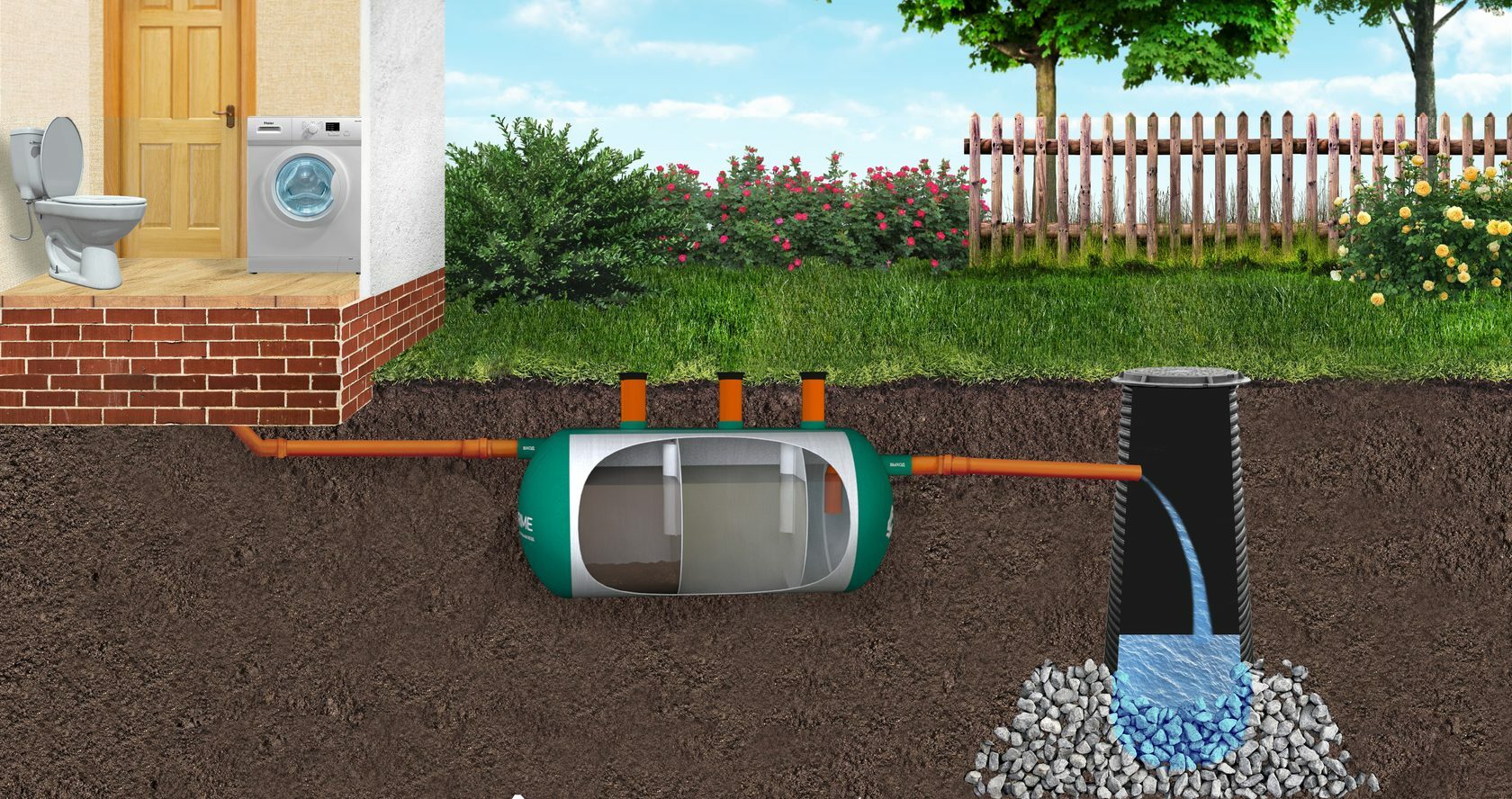It is not always possible to eliminate the odor by pumping or cleaning, so many people are interested in what to add to the septic tank so that it does not smell. Sometimes it is enough to eliminate damage or identified defects in the design, but more often without biological or chemical preparations can not do without.
Also, before buying this or that remedy, it is necessary to identify the cause of the appearance of an unpleasant odor. And there is also a difference between cesspool septic tanks and ordinary ones. In our article we will tell you what means you can get rid of the smell and what to do to minimize the risk of its appearance.
Causes of unpleasant odor from the septic tank
It is absolutely proven that there are 3 reasons for the appearance of unpleasant odor. Let’s talk about each one in detail.
The first reason is an improperly installed septic tank. What it means:
- No venting holes. Quite quickly from the septic tank begins to come a bad odor, if the installation of the device was made incorrectly. This is due to the insufficient number of holes in the drainage field and the very design of the purification system.
- Lack of a fan pipe. According to the accepted norms, in houses not higher than 2 floors in the device of sewerage is allowed to install a check valve instead of a fan pipe. Each of the homeowners already independently determines what is better suited for his cottage. But there is an important addition: the lack of a fan riser can negatively affect the pressure when filling the sewer pipes, which will damage the hydraulic gates.
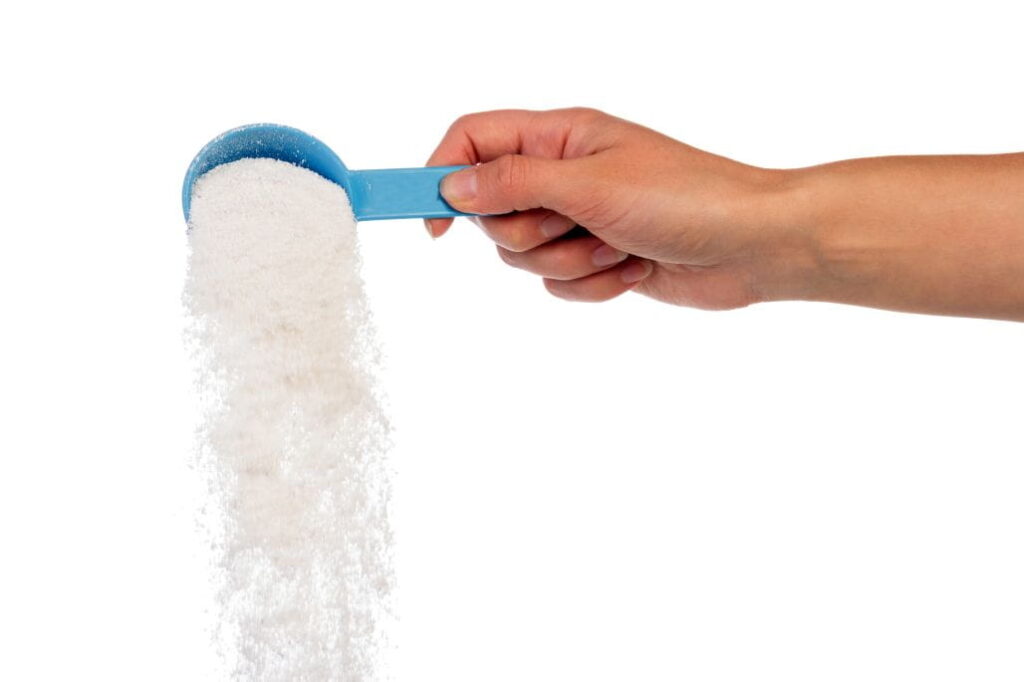
There are two other reasons:
- The absence of siphons
- There is mechanical damage to the pipes
Also, the cause of unpleasant odor can be a manufacturing defect of the septic tank.
Warranty obligations do not apply to products that were installed not by professional workers, but by others. Self-installation is very often resorted to in order to save money, but in the case of a defect, repairs will be made at your own expense. What should be done in the first place at the appearance of bad odor from the septic tank?
To determine the cause of the appearance of unpleasant odors should be analyzed:
- When the septic tank was last cleaned. Unpleasant odor and turbid sewage indicate silting in the chamber. It is necessary to remove solid sediment from the septic tank in a timely manner.
- Whether the ventilation pipe is equipped to exhaust air from the cesspool.
Whether there is no mechanical damage to the sewer pipes (cracks, leaks, etc.). If the cracks are small, it is almost impossible to notice them, they do not leak water, but odor may appear. - No harmful chemicals such as chlorine, manganese oxide, acids, disinfectants and medications have entered the sewer system with the water. Bacteria that process organic matter are killed when they interact with corrosive compounds.
- No detergents have been used or drained more than usual. From them a large amount of foam is formed, which negatively affects the work of microorganisms.
- Is there an oxygen supply regulator in the septic tank (if there is an aerator). If little oxygen enters the chamber, the bacteria die.
- Has the power supply been interrupted for more than 4 hours. Without oxygen, aerobic bacteria do not live more than 4-6 hours. If this happens, new bacteria will need to be repopulated and it takes 20 days for them to multiply.
- How long have the bacterial colonies in the chambers resumed. For normal operation of the septic tank, you need to maintain an optimal number of microorganisms.
- Is the compressor working properly and whether the perforated pipe through which the oxygen goes is not damaged. If there are violations in the work of the device, air is supplied intermittently, this also leads to the death of bacteria.
- Has not fallen into the sewer system solid debris, such as paper, plastic bags, vegetable peelings. This can cause the filter or overflow pipes to clog, damage will occur and the system will not work.
If the odor appeared because of the septic tank itself, then it is worth paying attention to the following points. A large amount of sludge is the main cause of the problem.
Silt very often builds up where the cesspool is rarely cleaned or used incorrectly. It appears on the bottom and walls of the septic tank. From the sludge comes a stinky odor, but the abundant amount of pollution leads to the overflow of the cleaning chambers and the exit of impurities outside.
Siltation is evidenced not only by a bad odor, but also by difficulties with flushing water into the sewer system and the effluent flowing out of the septic tank to the surface.
Perhaps the purification system for the house was wrongly chosen from the beginning, or it has fallen into disrepair over time. Therefore, the effluent pit fills up faster, the filtering system does not cope with the load.
In this case, it will be necessary to replace the septic tank and retrofit the purification station. To avoid such mistakes, you should calculate in advance what volume of cesspool is required for your needs.
Options, what to add to the septic tank, so that it does not smell
It happens, the pit smells strongly, spoiling the life of the owners. Improperly designed and installed septic tank, old design and unsuitable place for the cesspool provoke the appearance of an unpleasant odor.
You can resort to special preparations, they will stop all the processes in the septic tank and clean the air.
There are two types of such means – chemical and biological.
Chemical cleaning can be a good alternative to mechanical cleaning. There are two methods of applying such preparations. The first is to first pump out all the effluent. The walls of the septic tank are covered with chemical means and then washed off with water. The second method – the active substance is poured or poured inside the chamber, without releasing the septic tank.
The table describes three classes of preparations that will help get rid of unpleasant odor.
| Type of composition | Description |
|---|---|
| Nitrate cleaners | The main substance is nitrates. Additional elements enhance the performance. Possess high chemical aggressiveness. Effective composition, the odor disappears within a day. Require caution, as they contaminate the soil and destroy plants within a radius of several meters. |
| Acids | Provide quality cleaning, dissolve sludge and solids, eliminate odor and deposits on the walls. Do not use for plastic septic tanks and pits without a sealed bottom, as they can damage the materials and lead to leaks. |
| Ammonium | The safest chemical for septic tanks, removes odor and cleans the chamber. Not suitable for homes with chlorinated water and detergents, as these substances neutralize the effect of ammonium. |
1. Bacterial Enzyme Treatments
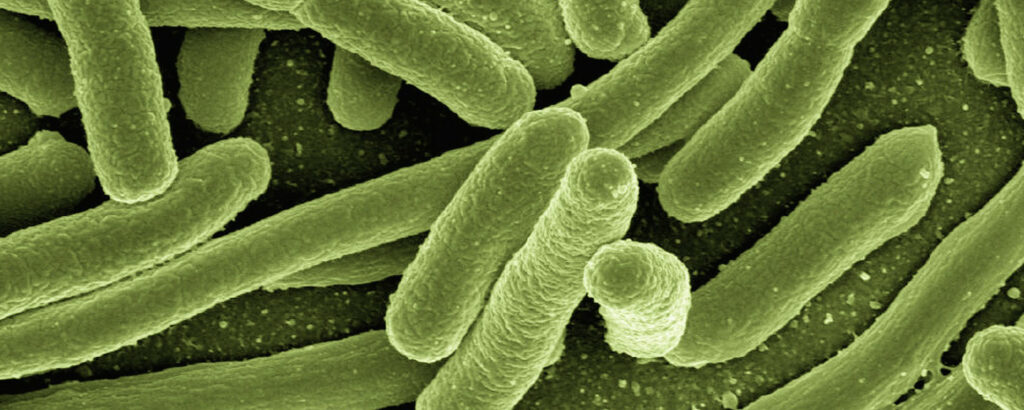
- What it does: Introduces beneficial bacteria that break down waste and neutralize odors.
- Why it works: These bacteria help restore the natural balance in the septic tank, reducing the buildup of sludge and gases that cause unpleasant smells.
- How to use: Available in powder, liquid, or tablet form; typically flushed down the toilet.
2. Septic Tank Additives (Non-toxic or Natural Solutions)
- What it does: Additives containing enzymes or eco-friendly chemicals help break down waste more efficiently.
- Why it works: They enhance the tank’s natural decomposition process and reduce the gas emissions responsible for odors.
- How to use: Periodically add the product as instructed.
3. Aeration Systems
- What it does: Introduces oxygen into the tank to encourage aerobic bacterial activity.
- Why it works: Aerobic bacteria are more efficient at breaking down organic waste, reducing odor-causing gases like hydrogen sulfide.
- How to use: Requires installing an aeration unit inside the septic system.
4. Charcoal or Carbon Filters
- What it does: Filters the gases that escape through the septic tank vent, reducing odors.
- Why it works: Activated charcoal or carbon absorbs foul-smelling gases.
- How to use: Attach a filter to the tank’s vent pipe to capture odors before they escape.
5. Septic Pumping
- What it does: Removes the buildup of sludge and solid waste that can produce strong odors.
- Why it works: Regular pumping prevents the tank from overflowing and emitting foul smells.
- How to use: Have your septic tank pumped every 3 to 5 years (or as needed).
6. Septic-safe Cleaners
- What it does: Reduces the buildup of materials that cause odor without harming the bacteria in the tank.
- Why it works: Septic-safe cleaners break down fats, oils, and greases without killing beneficial bacteria.
- How to use: Use these cleaners regularly for household cleaning tasks instead of harsh chemicals.
What to Avoid:
- Chemical Cleaners: Avoid harsh chemical-based cleaners, as they can kill beneficial bacteria and cause more odor problems.
- Bleach and Chlorine: These can also neutralize the bacteria that are essential for breaking down waste.
Cautions: It is not recommended to use these products on their own as they are dangerous to health and the environment.
So what can I add to my septic tank to keep it odorless without harming the environment and humans? It is possible to purchase biological preparations. The cleaning will be done by bacteria. Biological preparations do not damage the septic tank and the sewer system at all, you should not worry about this.
There are three main forms of compounds that are available on the market:
- In tablets. Excellent for small containers, about one cubic meter. They are used mainly for biotoilets and freestanding showers. Some tablets are recommended to dissolve before use, some are used in solid form.
- Liquid. They are concentrated preparations in canisters and are used for tanks of large volumes. Also effective in combating pollution, deposits on the walls of the septic tank, pathogenic bacteria, which reduces the danger to nature.
- In granules. Apply depending on the type – dissolved or in dry form. There are preparations of different concentrations for different types of volumes.
Tablets:
RID-X Septic Treatment Tablets
- What it does: Contains beneficial bacteria and enzymes to break down household waste. Helps prevent septic backups and reduce odors.
- How to use: Flush one tablet monthly.
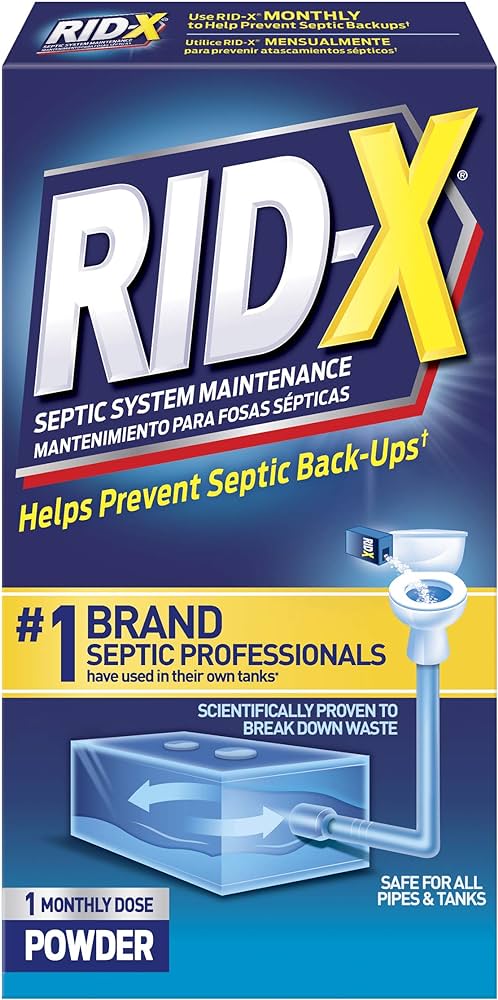
Bio-Active Septic Tank Treatment Tablets
- What it does: Natural bacteria and enzymes to help break down waste and eliminate odors.
- How to use: Flush one tablet into your septic system once a month.
Liquids:
Green Gobbler Septic Saver Liquid
- What it does: Contains enzymes and bacteria to break down solid waste and reduce odors.
- How to use: Pour the recommended amount into the toilet monthly.
EcoSolve Septic Tank Treatment Liquid
- What it does: A biodegradable liquid formula that maintains septic system health by promoting bacterial activity and reducing foul odors.
- How to use: Pour into the toilet or septic system according to instructions.
Roebic K-37 Septic Tank Treatment
- What it does: Liquid bacterial formula that digests organic matter, preventing clogs and reducing odors.
- How to use: Add directly to the septic system once every six months.
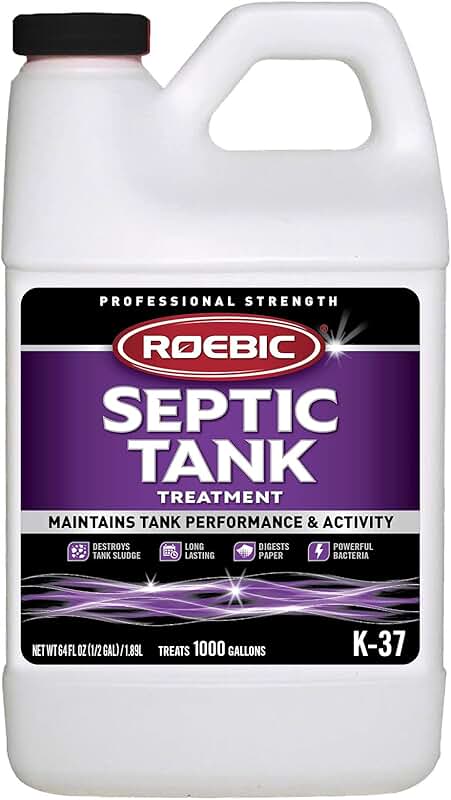
Pellets:
One Flush Septic Treatment Pellets
- What it does: Helps maintain a healthy septic system by breaking down organic waste and eliminating odors.
- How to use: Flush one packet of pellets monthly.
BioFlush Septic Pellets
- What it does: Bio-friendly pellets designed to reduce odors and enhance the bacterial activity in the septic tank.
- How to use: Flush one pellet packet monthly.
These products are designed to keep your septic system running smoothly and odor-free by promoting natural bacterial activity inside the tank. Be sure to follow the package instructions for best results.
Other ways to eliminate septic tank odor
There are several effective methods:
- Installing a fan pipe will help get rid of unpleasant odors. When installing sewerage in buildings with two or more floors are guided by SNiP 2, 04, 01-85. In this case, the fan pipe is installed as a continuation of the riser and lead it to the roof. The same equipment can be put in a single-storey house. Fan pipe will help not only to cope with unpleasant odors, but also to exclude the breakdown of the hydraulics of the gate elements.
- Service and cleaning of the septic tank from sludge eliminates the cause of bad odors. Such an operation is easy to carry out by calling an assembly machine. Or you can clean the cesspool yourself, using a fecal pump.
- Mounting siphons on the sink, sink, bathtub will not only prevent the entry of bad odor from the sewer, but also keep the pipes from clogging.
- Check and eliminate all damage to the pipes, if defects are found replace the failed section.
- Check the septic tank for tightness (if it is a factory model) and warranty repair of the device.
- Service and cleaning of the compressor and perforated pipe, which can be performed independently, using the instructions for the devices.
- Population of new bacterial colonies in the septic tank.
- Adjustment of the oxygen supply to the aerobic septic tank (if used).
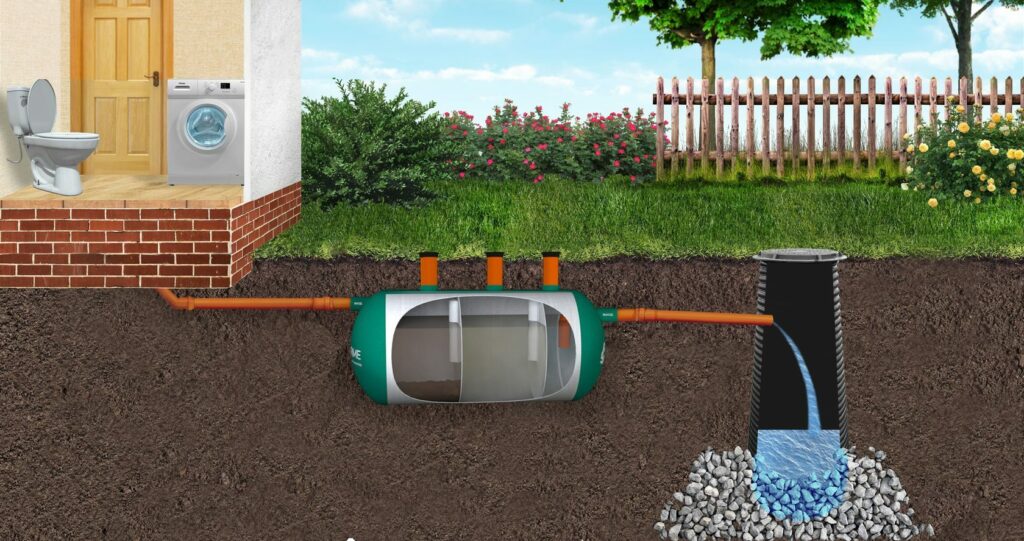
Prevention and recommendations for the care of the septic tank
To prevent the appearance of unpleasant odors from the cesspool in the country house in advance, it is worth taking the following steps:
- When choosing a septic tank, give preference to a larger volume, it is better than choosing a small one and experiencing problems due to an overflowing tank.
- For the selection of bacteria for the cesspool (the simplest option – anaerobic microorganisms that do not require an influx of fresh air).
- Regular maintenance and cleaning of the storage chamber, which will help prevent bad odors.
- Buying a septic tank, you should check the tightness, the absence of damage to the parts, the material from which the device is made. On the quality of performance depends on how long it will last.
And here are the recommendations of country house owners on the elimination of unpleasant odors, to which it is worth listening:
- When cleaning septic tanks, you need to pay attention to your own protection. To protect yourself from getting poisonous substances on the skin and mucous membranes will help glasses, respirator, rubber gloves, boots, rubber apron, an old bathrobe.
- The remaining liquid after cleaning in the septic tank is recommended to pump out with an ordinary pump.
- Risk the filter in this case is not worth it, it can easily clog.
- Waste from cesspools can not be poured on the soil, it pollutes the environment. They should be collected in plastic barrels and taken to a special waste recycling center.
It is necessary to precisely observe all recommendations for the operation of the septic tank, prescribed in its instructions by the manufacturer, this will help to avoid many problems.
